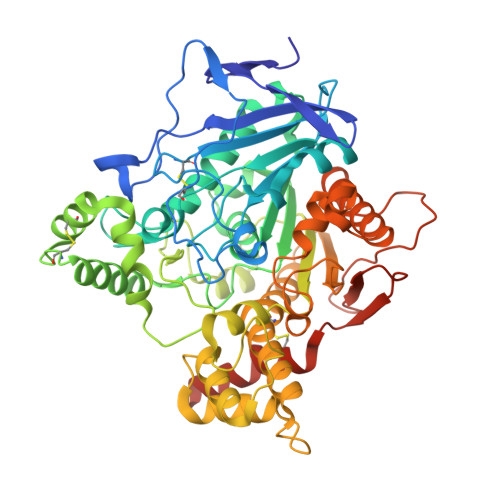Structural Determinants of Torpedo californica Acetylcholinesterase Inhibition by the Novel and Orally Active Carbamate Based Anti-Alzheimer Drug Ganstigmine (CHF-2819)
Bartolucci, C., Siotto, M., Ghidini, E., Amari, G., Bolzoni, P.T., Racchi, M., Villetti, G., Delcanale, M., Lamba, D.(2006) J Med Chem 49: 5051-5058
- PubMed: 16913695
- DOI: https://doi.org/10.1021/jm060293s
- Primary Citation of Related Structures:
2BAG - PubMed Abstract:
Ganstigmine is an orally active, geneserine derived, carbamate-based acetylcholinesterase inhibitor developed for the treatment of Alzheimer's disease. The crystal structure of the ganstigmine conjugate with Torpedo californica acetylcholinesterase (TcAChE) has been determined at 2.40 A resolution, and a detailed structure-based analysis of the in vitro and ex vivo anti-AChE activity by ganstigmine and by new geneserine derivatives is presented. The carbamoyl moiety is covalently bound to the active-site serine, whereas the leaving group geneseroline is not retained in the catalytic pocket. The nitrogen atom of the carbamoyl moiety of ganstigmine is engaged in a key hydrogen-bonding interaction with the active site histidine (His440). This result offers an explanation for the inactivation of the catalytic triad and may account for the long duration of action of ganstigmine in vivo. The 3D structure also provides a structural framework for the design of compounds with improved binding affinity and pharmacological properties.
- Istituto di Cristallografia, Consiglio Nazionale delle Ricerche, Area della Ricerca di Roma, P O Box 10, I-00016 Monterotondo Stazione (Roma), Italy.
Organizational Affiliation:




















